Original WWII German "Bouncing Betty" Mine Shrapnel (Recovered From Normandy France Battlefield) Military History Gift Display Case (with C.O.A.)
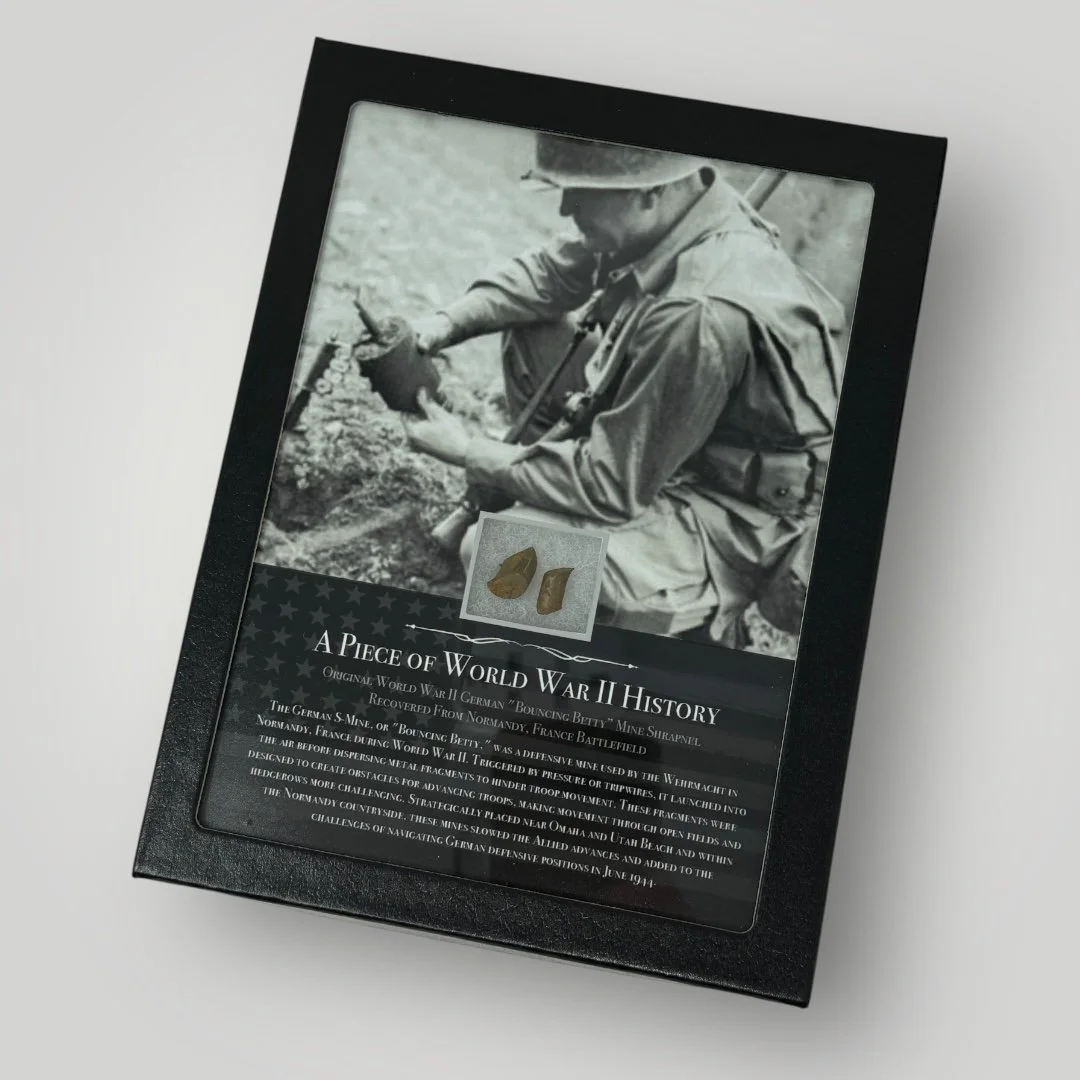

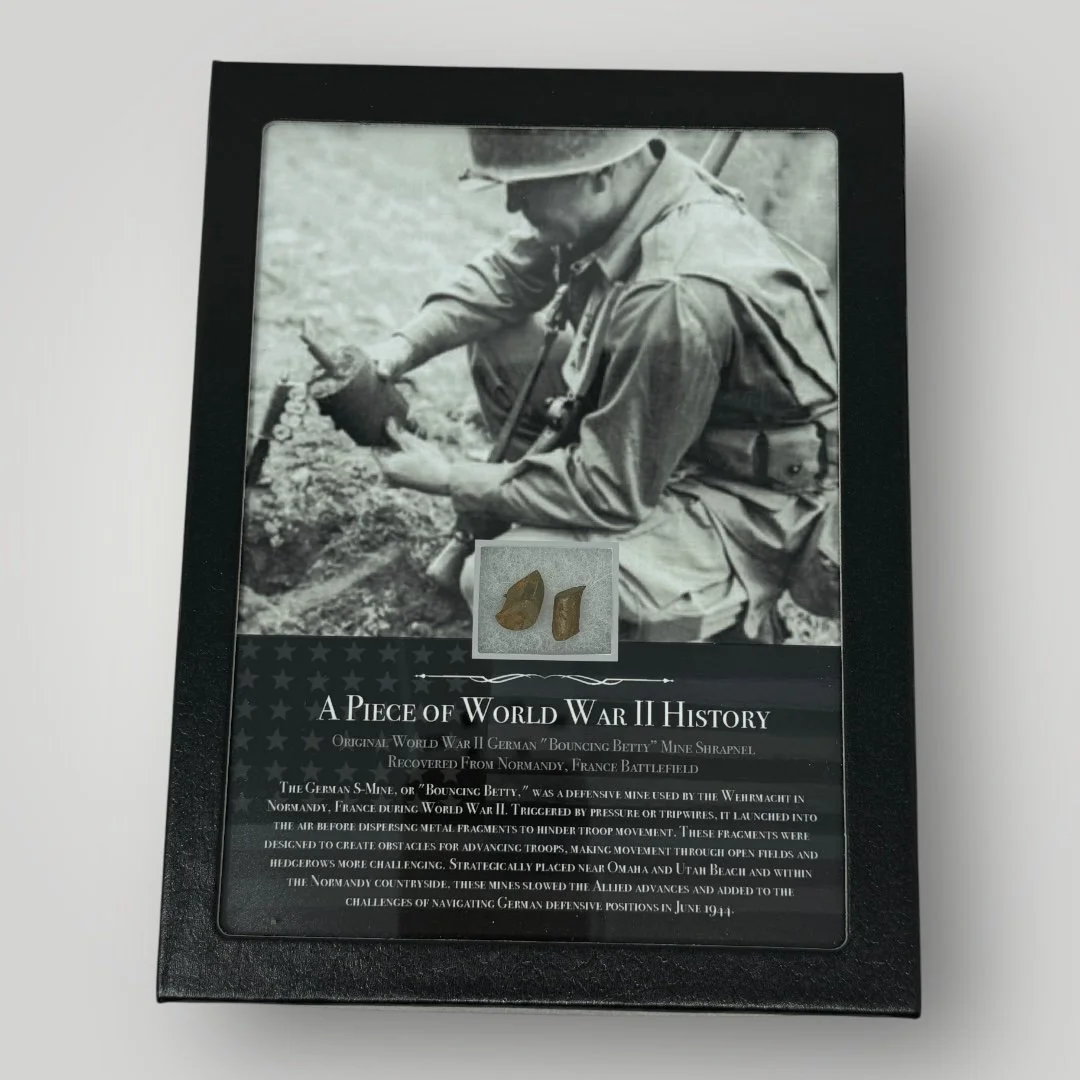

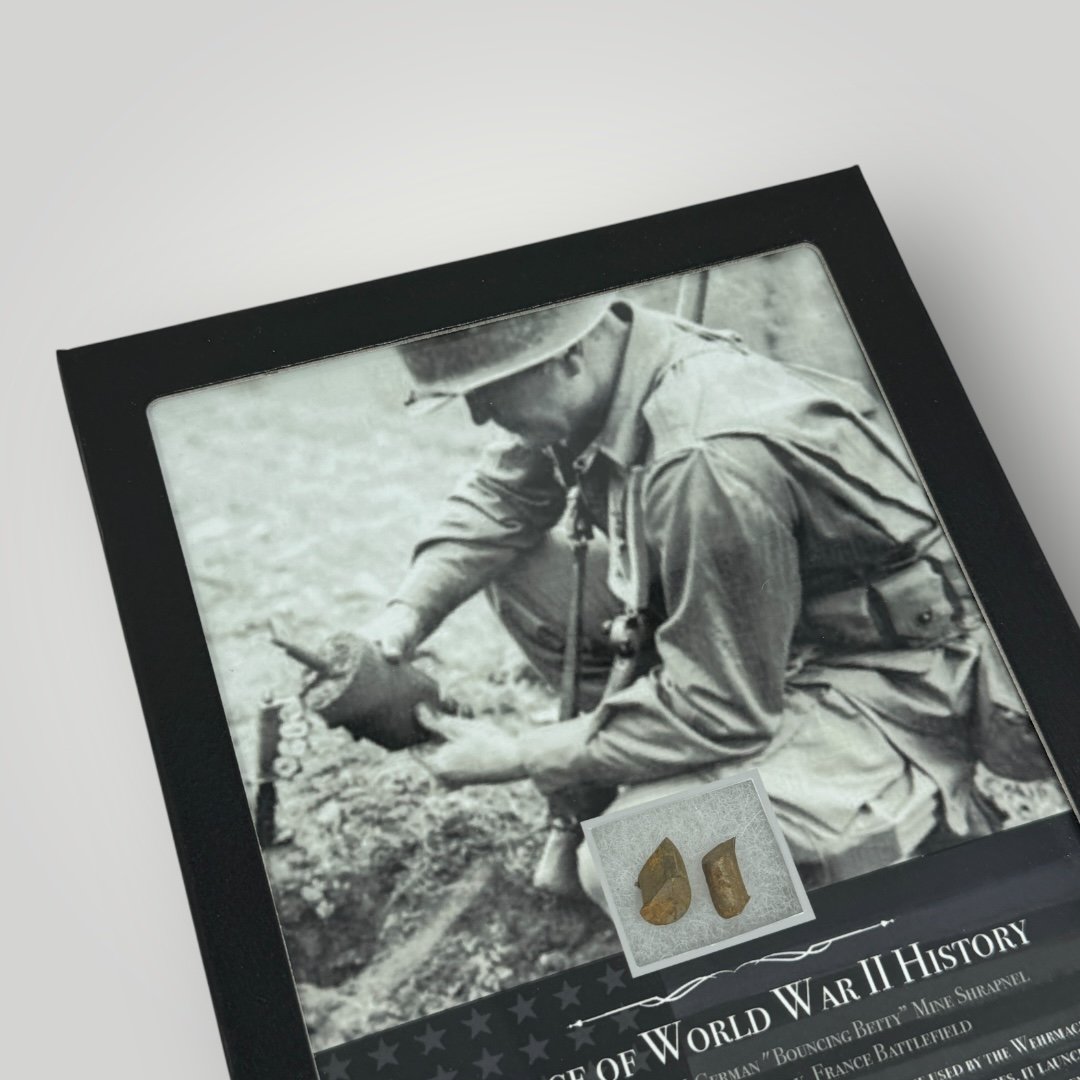
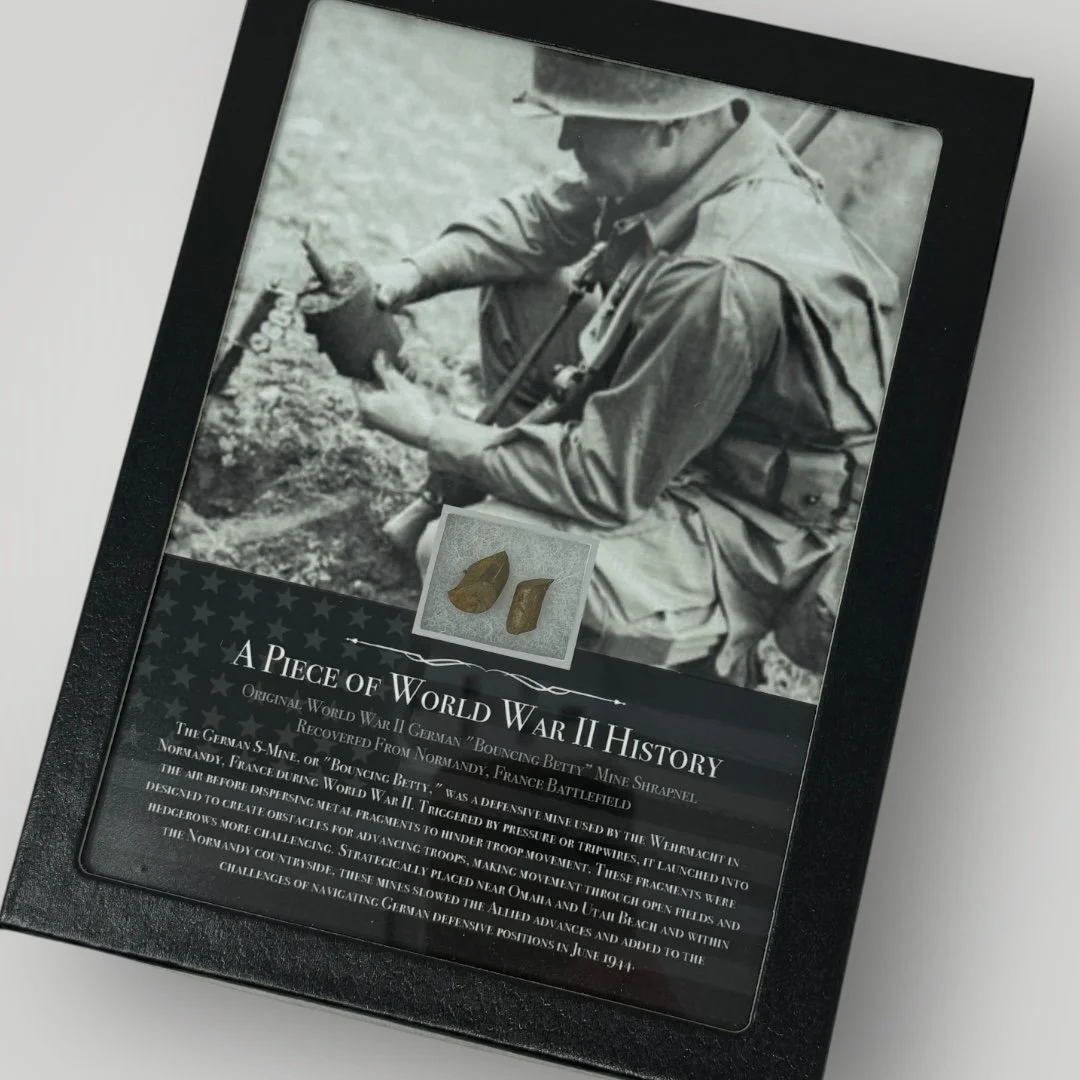

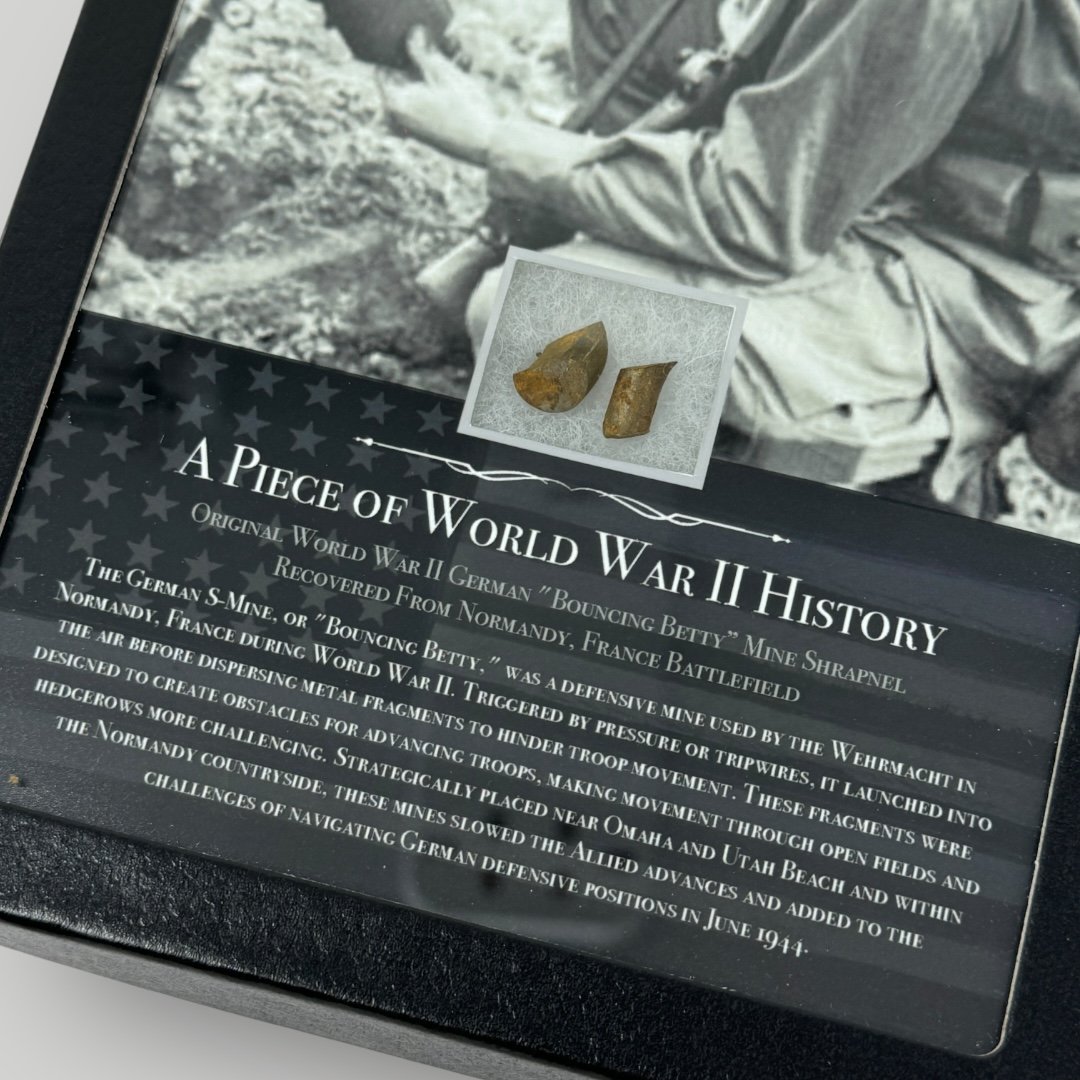
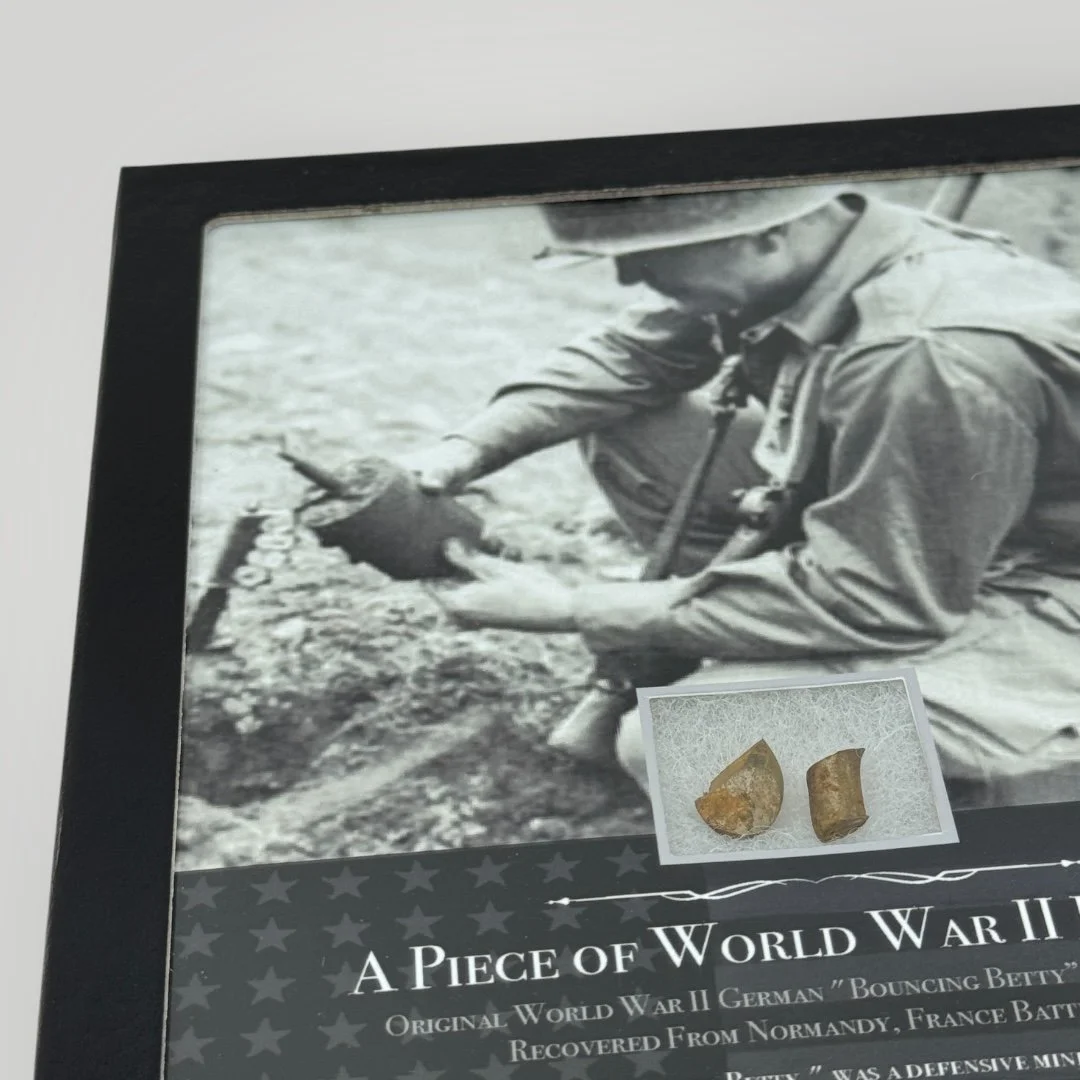
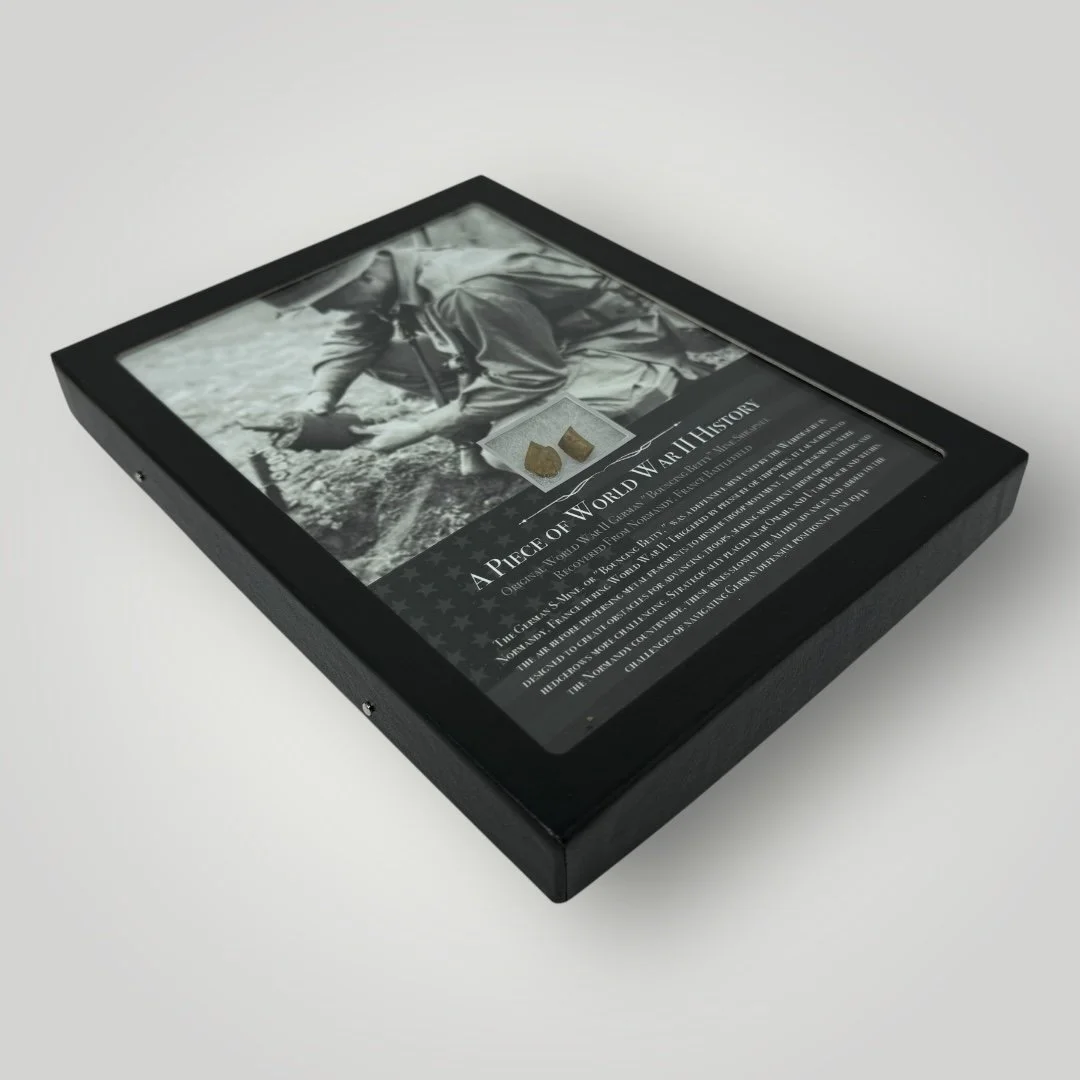
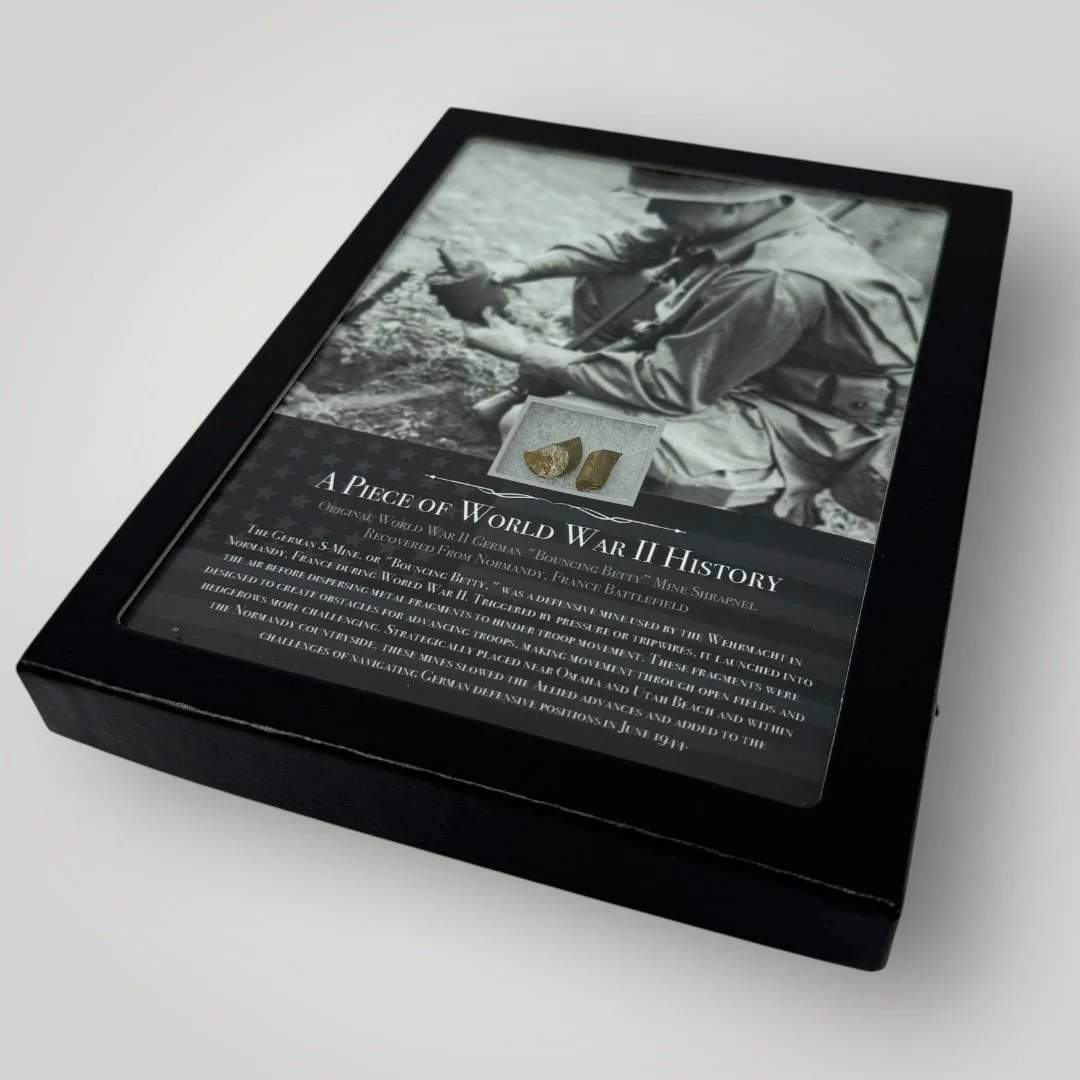
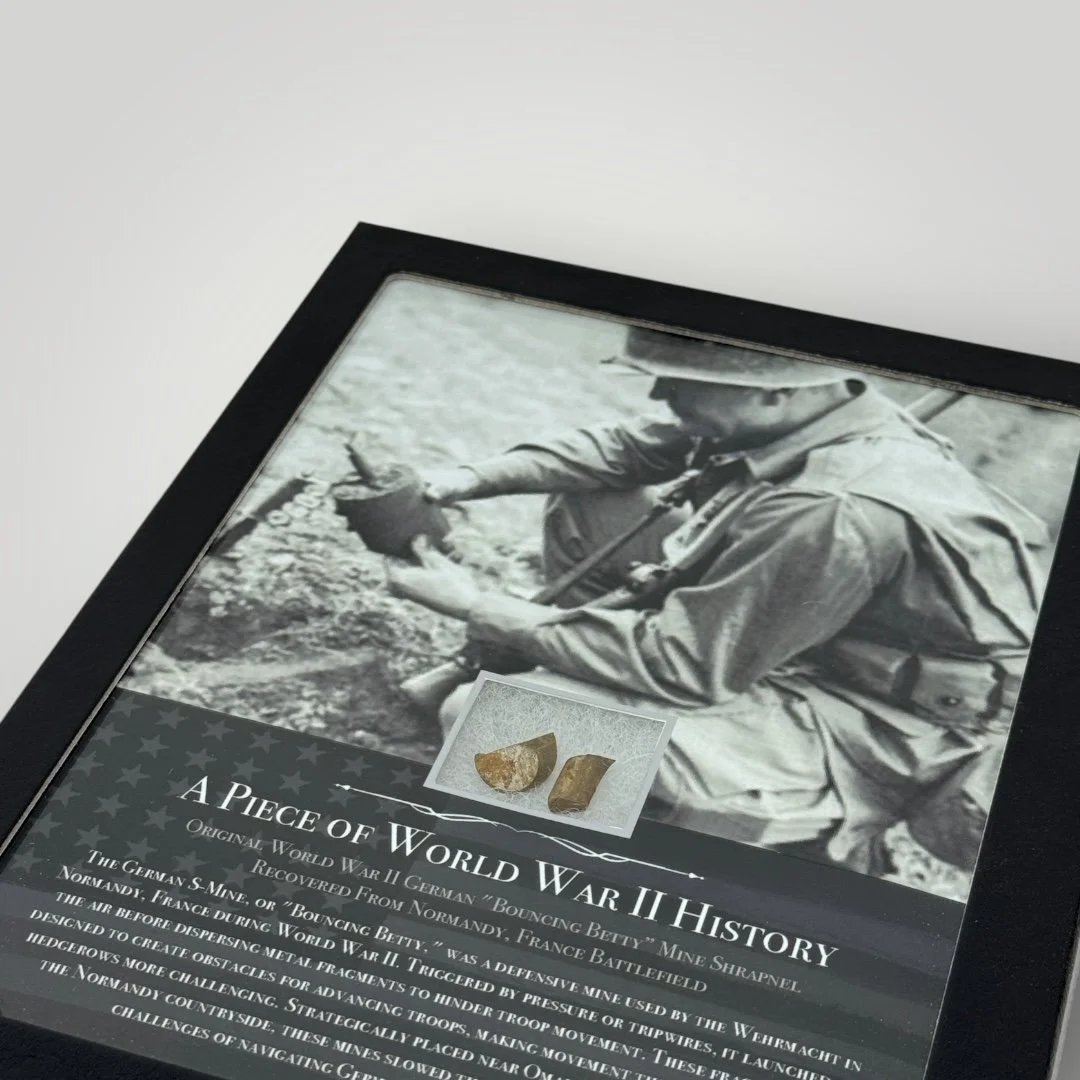
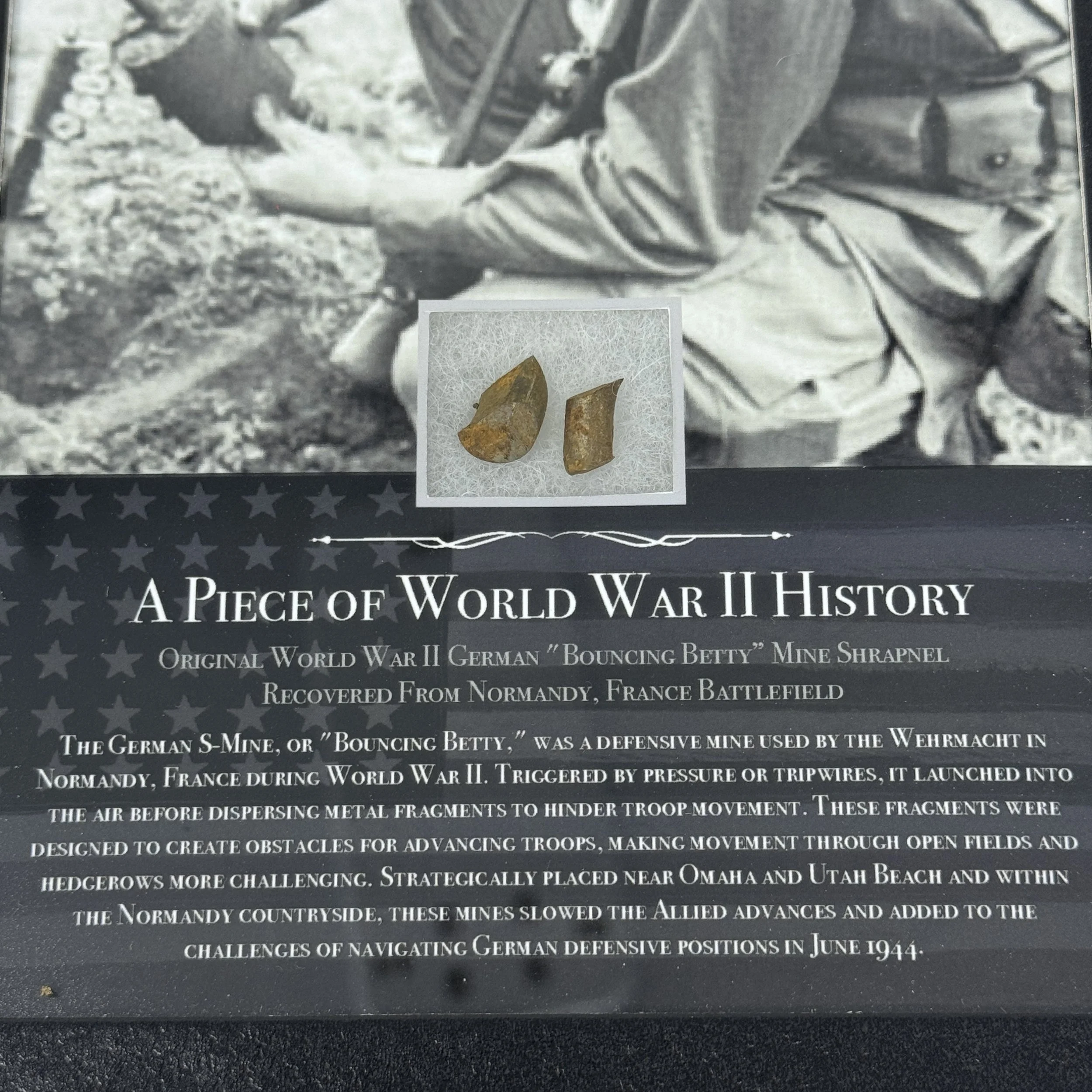
Original WWII German "Bouncing Betty" Mine Shrapnel (Recovered From Normandy France Battlefield) Military History Gift Display Case (with C.O.A.)
Comes with a hand-signed C.O.A. and a full historical research write-up
This would make an incredibly unique gift for any WWII or D-Day enthusiast! This already comes in a beautiful glass display ready to become a conversation centrepiece in any office or display case.
Display Size: 8 inches tall x 6 inches wide
From: World War II - ETO
Type: Original WWII German "Bouncing Betty" Mine Shrapnel Recovered From Normandy, France Battlefield
Dated: 1944
*Limited Edition of 50*
This display series is a limited edition of 50 pieces, meaning that each "Piece of History" WWII display is unique. Please note that the WWII German "Bouncing Betty" mine shrapnel that you receive may vary slightly from the display shown, as each one is one-of-a-kind! This display case is our LARGE size, measuring a perfect 8 inches tall x 6 inches wide.
The German Bouncing Betty, officially designated the S-mine (Schrapnellmine), was one of the most feared anti-personnel weapons deployed during World War II, particularly notorious for its devastating role on the Normandy battlefield following the D-Day landings. Developed in the 1930s and refined through early war experiences, the S-mine was ingeniously designed to launch itself approximately 1 meter into the air before detonating, releasing a burst of steel ball bearings and metal fragments in a lethal 360-degree horizontal arc. Unlike traditional landmines that exploded beneath a target’s foot, the Bouncing Betty turned the air itself into a killing zone, striking soldiers at chest and head height, where vital organs and arteries were most vulnerable. Its effective kill radius often reached up to 20 meters, while injuries could occur even beyond that, depending on terrain and vegetation. During the Normandy invasion, as Allied troops advanced through hedgerows, fields, and village paths, many encountered these hidden devices. Often concealed with minimal metal content or disguised under foliage and dirt, they were nearly invisible to the eye and resistant to early mine detectors. The psychological terror was immense—troops knew that one wrong step could unleash a rain of hot, spinning shrapnel capable of decimating entire squads. Reports from medics and frontline units noted that Bouncing Betty wounds were often gruesomely consistent: deep abdominal lacerations, shredded limbs, and horrific facial injuries. These injuries overwhelmed field hospitals and amputee wards, contributing significantly to the casualty toll in the days and weeks following the initial landings. Moreover, their strategic placement along key roads, exits from landing zones, and defensive perimeters meant that even areas considered secure were often deadly traps. The Bouncing Betty was not just a weapon of destruction, but a tool of psychological warfare, intended to maim rather than kill, thereby sapping morale and bogging down the Allied advance with the burden of the wounded.
This would make an extraordinary addition to any WWII collection.